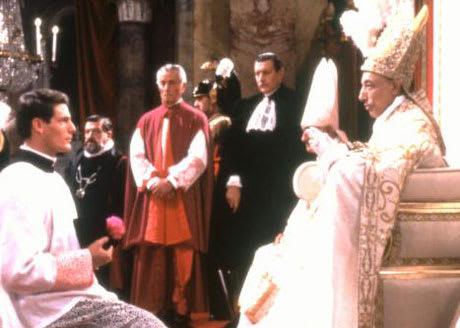Ooooh, that naughty Catholic Church, always getting into mischief! It seemed like not so long ago that the Catholic Church was all-seeing, all-knowing, all-powerful and unimpeachable. While things have been rough for the Pope and his red-suited allies since that pesky Martin Luther started hammering things to doors, the 20th century turned out to be particularly unkind, what with a worldwide reduction in superstition, an increase in literacy and dissemination of information, and the rise of global media. What on Earth are God's corporeal vessels to do? For the idealistic and fresh-faced Father Flaherty (Christopher Reeve), the answer is get involved with the mafia and sell contraband American goods in the privation of post-World War II Europe. Fair enough. Flaherty doesn't instantly turn to the dark side, but after a harrowing war experience he seems more inclined to earthly pleasures, including romancing a tentative Carmelite nun (Geneviève Bujold). 1982's Monsignor was sort-of a big budget one-off handed to Hollywood outsider Frank Perry after the unexpected success of his film adaptation of the Joan Crawford tell-all, Mommie Dearest. While not nearly on the same level of camp, Monsignor's pleasures often come from the passionate overacting of Christopher Reeve. Reeve is good, mind you, in a way playing a dual role much like his claim to fame in the Superman films (he was between number two and three here), but is often required to visually convey the mental and moral turmoil of his fateful decisions ― tough stuff for even the most gifted of actors. The film is mostly played straight, cleverly combining the dead genre of the religious epic with the very much alive mafia film, from the final script by once promising writer/director Abraham Polonsky (Force of Evil, Body and Soul), whose career was cut short by the blacklist. While it could have done with some judicious editing, Monsignor is charming enough as a vaguely controversial, but ultimately classically Hollywood story.
(Shout! Factory)Monsignor
Frank Perry

BY Bjorn OlsonPublished Jan 13, 2012